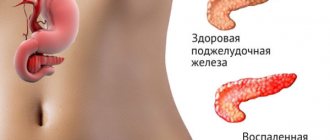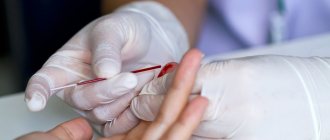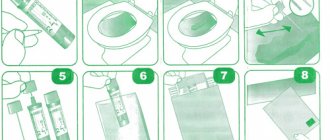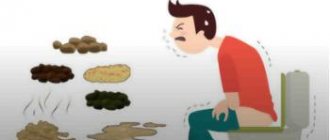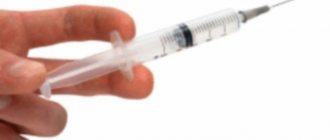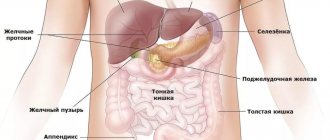Dysbacteriosis. Main symptoms and consequences
In medicine, dysbiosis is not considered a disease - it is rather an indicator of an unhealthy state of the body. Dysbiosis can be described as a general disorder of the digestive system.
The fundamental factors leading to dysbacteriosis in a baby’s health are:
- Improper diet;
- Taking medications that are difficult for the body;
- Viral infections;
- Experienced stressful situations;
- Artificial feeding.
Your child probably has dysbiosis if the following symptoms appear:
- Changed stool consistency;
- Disorders of the gastrointestinal tract functions;
- Painful sensations in the abdominal cavity;
- Feeling nauseous;
- Manifestations of allergies on the skin;
- Reducing the rate of weight gain.
When symptoms of dysbiosis are detected, it is necessary to look for the root of the problem - the very reason why the balance of intestinal microorganisms is disturbed. That is, it is necessary to eliminate first the cause, and not the effect - such treatment will benefit the child to the greatest extent.
Stool culture test
People who come to clinics with complaints of discomfort and pain in the abdomen, difficulties with defecation and constant nausea are prescribed standard tests to make a reliable diagnosis, one of which is a stool culture test.
Using this type of bacteriological study, it is possible to determine the composition, types and approximate number of microorganisms living in the intestines. This examination method is indispensable, since it helps to identify acute intestinal pathologies and causative agents of various dangerous ailments.
Decoding the results
Diagnosis can only be made by a qualified physician. The doctor assesses the patient’s condition based on the information obtained during the research. Regardless of the type of institution in which the study was conducted, the results form will detail the normal values. The obtained indicators need to be compared with them.
Reference values should be within the following limits:
- typical e-coli – 107–108;
- Escherichia hemolytic coli - bacteria of this type must be completely absent from the biomaterial being studied;
- lactose-negative bacillus – less than 105;
- microbes like Proteus – less than 102;
- other opportunistic enterobacteria – less than 104;
- non-fermenting bacteria – less than 104;
- enterococci – less than 108;
- hemolytic staphylococcus - bacteria of this type must be completely absent;
- bifidobacteria – 1010;
- lactobacilli – 107;
- bacteriids – 107;
- clostridia – less than 105;
- yeast fungi – less than 103.
Even if the results deviate greatly from the norm, there is no need to panic, since in some cases such deviations can be caused by external factors. Only an experienced specialist should decipher the analysis and make a diagnosis.
According to the degree of growth, the biomaterial under study is classified into 4 degrees:
- 1st degree. The growth of bacteria on a liquid medium is weakly expressed, and on a solid medium it is completely absent;
- 2nd degree. The growth of one type reaches 10 colonies on a dense medium;
- 3rd degree. The growth of bacteria reaches up to numbers from 10 to 100;
- 4th degree. Significant growth of the colony (more than 100).
If the patient is diagnosed with stage 1 or 2, this indicates that the disease is not caused by the microorganisms present, but by other reasons. 3 and 4 indicates that the symptoms are caused precisely by the microorganisms present.
Why take a test for dysbiosis in a baby?
It is impossible to confirm the presence of dysbacteriosis in an infant solely based on similar symptoms. To confirm the diagnosis, it is necessary to undergo tests. The main tests for dysbacteriosis are:
- Stool culture tank. This test is performed to identify the concentration of obligate microorganisms in the intestines;
- Coprogram. This analysis determines the ability of the intestines to digest incoming food;
Stool culture tank for dysbacteriosis
Such an analysis helps determine the percentage of beneficial and harmful microorganisms that form the intestinal microflora, and also assesses the function of intestinal digestibility. If unprocessed starch, acids or fiber are detected in a fecal sample, a conclusion can be drawn about intestinal dysfunction. The detection of blood cells or epithelial cells in a newborn feces sample will tell the specialist about developing inflammatory processes in the gastrointestinal tract.
How to understand the results obtained?
Analysis data is usually received within a week. The interpretation of the test for dysbacteriosis comes on a form that indicates the normal content of a specific microorganism in the feces of an infant and reference values (they can be different, depending on the laboratory). If bacteria are not found in the stool, then “absent” or “abs” is written opposite their name. Each age group has its own norm, which is largely determined by the child’s nutrition.
Bifidobacteria constitute the largest group of representatives of the intestinal microflora. They are the first to colonize the intestines in the first week of a child's life. Their main functions are the synthesis of vitamins B and K, assistance in the absorption of calcium and vitamin D, and inhibition of the growth of opportunistic flora. Their number in infants is greater than in a baby on mixed or artificial feeding.
Lactobacilli occupy an honorable second place among beneficial intestinal bacteria. They also prevent the growth of pathogenic bacteria, in addition they secrete lactase (an enzyme for digesting lactose), contribute to the synthesis of immune cells for local protection - immunoglobulins, and carry out antiallergic reactions. Their concentration in an infant is also higher; with the introduction of complementary foods, it may decrease.
Bacteroides can be found in the feces of a 7-8 month old baby - they are absent in the intestines in the first half of life. Their help is to digest proteins, ferment carbohydrates and suppress the growth of harmful bacteria.
Escherichia coli or Escherichia coli are divided into three types:
- Escherichia coli with normal enzymatic activity is a beneficial bacteria because fights pathogenic flora, promotes the growth of lactobacilli and bifidobacteria, strengthens the immune system, synthesizes B vitamins and vitamin K. The normal content in feces is the same for all age groups.
- Escherichia, which has low enzymatic activity. They do not bring any benefit to the body, and there is no harm from them either. However, if there are a lot of them in the stool, then this is a good indicator of incipient dysbiosis.
- Hemolyzing Escherichia coli. It is a pathogenic microbe. It shouldn't be in the stool.
Some conditionally pathogenic microbes also benefit the body, for example, enterococci participate in carbohydrate metabolism, stimulate local immunity, and block the growth of fungi and other pathogenic microbes. This group also includes the following bacteria:
- streptococci,
- non-hemolytic staphylococci,
- clostridia, which in large quantities can cause diarrhea and watery feces, but the infectious process is caused only in conjunction with other harmful bacteria against the background of reduced local immunity,
- yeast-like fungi of the genus Candida grow if the number of “restraining” bacteria decreases, and cannot independently cause dysbiosis,
- Enterobacter, Klebsiella, Citrobacter cause constipation and allergies when their number increases.
Non-fermenting bacteria should also be present in the stool. Their absence indicates poor digestion. With preserved intestinal microflora, the stool culture tank shows normal values of these bacteria. If the decoding of the analysis reveals a high concentration, then the colony of microbes is alternately exposed to different antibiotics to find out which one they are sensitive to.
Pathogenic bacteria, causative agents of infectious diseases, should not be found in feces. These include Shigella, Salmonella, hemolysing Escherichia coli, aureus, hemolytic and plasmacoagulating staphylococci.
With dysbacteriosis, the content of lactobacilli and bifidobacteria is reduced, and the content of opportunistic bacteria is increased. This is an imbalance.
So that decoding does not present any difficulties for you, we present a table of the composition of microflora in children depending on age and method of nutrition.
The composition of the intestinal microflora, the norm depending on the age of the child and the type of feeding
| Bifidobacteria | 107-1011 | 106-108 | 106-109 | 1010-1011 | 109-1010 |
| Lactobacilli | 105 | 104-106 | 104-106 | 106-107 | 107-108 |
| Bacteroides (found in cases older than 3 months) | 106-1010 | 108-1010 | 105-109 | 107-109 | 109-1010 |
| Escherichia coli | 105-108 | 107-109 | 106-109 | 107-108 | 107-108 |
| Enterococci | — | 106-109 | 105-109 | 106-107 | 107-108 |
| Saprophytic staphylococci | 102-104 | 103-106 | 103-105 | 4 | 4 |
| Clostridia | 102-103 | 103-105 | 102-104 | 5 | 5 |
| Yeast fungi (lat. Candida) | 102-104 | 102-104 | 101-103 | 3 | 4 |
| Pathogenic enterobacteria | — | — | — | — | — |
How to collect stool for analysis for dysbacteriosis?
To collect material for testing for dysbacteriosis, it is recommended to use a special disposable sterile container for coprogram, which can be purchased at any pharmacy. This container is easy to use and comes with a stick for collecting feces.
Collecting feces from a diaper or oilcloth is a bad idea, since with this method foreign substances (for example, the antiseptic contained in the diaper) can get into the fecal sample, which will distort the analysis result.
To collect biomaterial from loose stools, it is better to use a special children's urine collector, which is also sold at any pharmacy.
The biomaterial sample must be brought for testing while still fresh, preferably within two hours after collection. Due to the irregularity of feces in newborns, it is possible to store a sample of biomaterial for a short period of time at a low temperature (in the refrigerator). To provoke the release of bowel movements at the right time, you can use physiological stimulation: the parent lightly presses on the lower part of the abdomen and smoothly strokes the abdomen clockwise.
Rules for collecting material for research in an infant
The rules for collecting feces for research from a newborn are based on simple and feasible actions for parents. According to the requirements of modern laboratories, stool collection from children and adults is carried out in special sterile containers. In addition, it is necessary to collect a stool sample from the baby and submit it for research as soon as possible so as not to distort the result.
Since the moment of bowel movement of a newborn is difficult to predict, you can store feces in the refrigerator at a temperature not lower than +4 °C and not higher than +8 °C. On the question: how long can the material be stored? Laboratory assistants warn that no more than eight hours, taking into account the delivery time.
To identify Giardia, storing the test is not recommended. The baby's stool must be put under the microscope while still warm, since the microorganisms only live for a few hours.
Testing a child's stool for pinworm eggs is carried out by collecting debris from the outer folds around the anus. But since it is not necessary to collect feces from a newborn for this study, it is usually carried out when the baby reaches the age of three.
The basic rules of hygiene procedures before taking stool samples from a baby include simply washing the baby with baby soap and thoroughly wiping off water, regardless of the time of bowel movement.
Read more about the delivery rules here.
Interpretation of test results for dysbacteriosis
Usually, the result of the test for dysbacteriosis can be obtained within a week from the date of delivery to the laboratory. During this time, medical workers prepare a special environment in which the microorganisms in the stool sample develop and acquire certain characteristics necessary for research.
When a sample of biomaterial is delivered to a medical institution, the laboratory technician selects the required amount of feces sample and places the sample in a medical vessel with an already prepared liquid, in which all conditions for the comfortable life of microorganisms have been created. After a certain period of time, when the microorganisms have grown sufficiently, the laboratory assistant, using microscopic analysis, calculates the exact content of the grown microorganisms per gram of fecal substance. All indicators are displayed in a special table. The generally accepted unit of measurement for bacterial concentration is CFU/g.
The interpretation of the analysis is carried out according to the table, which presents the main indicators of the concentration of the types of microorganisms found in the sample.
Below are the norms for the content of certain groups of microorganisms in a fecal sample of a healthy infant:
- Bifidobacteria that facilitate the digestion of food. The normal value is about 1012 CFU/g;
- Lactobacilli that protect the intestines from inflammatory processes. The normal value is about 1012 CFU/g;
- Escherichia coli. The normal value is about 108 CFU/g. The concentration of E. coli is a reflection of the presence of parasites in the baby's body. If its indicator is low, parasites are present;
- Positive bacteria that help with metabolism. These microorganisms also protect the baby's body from harmful bacteria. The normal value is about 108 CFU/g;
- Coccus bacteria of various types. Normally, for a healthy body, the content should be about 106 CFU/g.
- Neutral bacteria that are present in the intestinal microflora, however, do not themselves affect the condition of the body. Their concentration should be within 105 CFU/g.
- Candida affecting the acid-base balance in the intestinal tract. Their concentration normally should not exceed 105 CFU/g.
Volume of test material
So how much stool is needed to test a child? Laboratory assistants, as a rule, warn parents that a teaspoon will be sufficient for research. Any type of stool analysis does not require a larger volume of stool.
Stool analysis from a child taken after using an enema, taking medications or suppositories is considered unsuitable for research.
Before taking a stool test, the child’s previously prescribed medications are stopped one day before. The newborn's stool is immediately provided to the laboratory, since storing it, even for a small amount of time, is not recommended.
In their recommendations, pediatricians advise how to pass a stool test of liquid consistency. Liquid feces are collected quickly before they are absorbed into the tissue. They are immediately submitted for research, since storing the masses is unacceptable.
If the stool consistency in children is normal, stool is collected with a special spoon or a sterile spatula, about the size of a teaspoon. It is very important to collect mucus in the stool if it is present.
